With Teams-Outlook integration, Microsoft lets you switch between meetings, emails, and files effortlessly. Microsoft added a new add-in called 'Teams Meetings' to the calendar tab in Outlook, which removed the need to switch between apps, saving you time and streamlining your workflow.
This Teams Add-in allows you to schedule meetings, invite attendees, and even join ongoing meetings directly from your Outlook calendar with a few clicks. It also allows you to easily attach Teams files to your emails or access them directly from your Outlook inbox.
While the Teams Meeting Add-in seems like a seamless all-in-one feature, it's not without its issues. While installing the Microsoft Teams app usually automatically adds the add-in to your Outlook calendar tab, several users have reported that the add-in disappears unexpectedly or is missing altogether in Outlook.
Causes of missing Microsoft Teams Add-in from Outlook
There are several reasons why you might be missing the Microsoft Teams Add-in for Outlook. Here are some of the most common causes:
- Outlook Disables the Add-in: If Outlook encounters performance problems within the app, it may automatically disable the Teams add-in for stability.
- Outdated Office: The Office version might be too old and incompatible with the Teams add-in. The Teams add-in requires Office 2013 or later. If you're using Outlook 2010 or older, you won't see it.
- Corrupted or Inaccessible DLL Files: The Teams DLL files need to be registered in the Windows registry. If these DLL files are corrupted or inaccessible, the add-in may not appear in Outlook.
- Nested Groups: If you're removed from a group assigned to the Teams add-in, you'll lose access and it will disappear from Outlook.
- Authentication: Sometimes, Teams Meeting add-in for Outlook requires signing into Teams using multi-factor authentication. Without it, the add-in won't be available.
- App Data Corruption:: If the Teams app is misconfigured or its data is corrupted, the add-in may not work properly and disappear from Outlook.
Fixing Teams Meeting Add-in for Outlook Missing Problem
Before diving in to fix the missing Teams Meeting add-in, check these quick things to ensure you meet its requirements:
- To use the Teams Meetings add-in in Outlook, you should be running Outlook 2013 or later, including Microsoft 365. If you have the correct version of Outlook and Microsoft Teams on your computer, the add-in should appear in the Outlook ribbon automatically.
- Make sure you are running the Microsoft Teams app for Work or School and logged into a Microsoft School or Work account. If you only have the Microsoft Teams for Home app, the add-in won't appear in Outlook.
- You should be signed into both Teams and Outlook with the same Microsoft account.
- Avoid running Outlook as an administrator to avoid issues with COM add-in registration. Use normal user mode instead.
1. Restart Microsoft Teams and Outlook apps
Like most issues with any app, the problem with Teams Add-in could be caused by temporary glitches in the Teams and Outlook apps. You can easily fix this issue by simply restarting the apps or your system. If you don't want to lose your work or progress by restarting the computer, you can restart the apps themselves.
Simply closing the apps and reopening them might not cut it because both of them tend to have background services running in the background.
- Open Task Manager with
Ctrl+Shift+Esc. - Move to the 'Processes' tab and look for the 'Microsoft Outlook' process from the list.
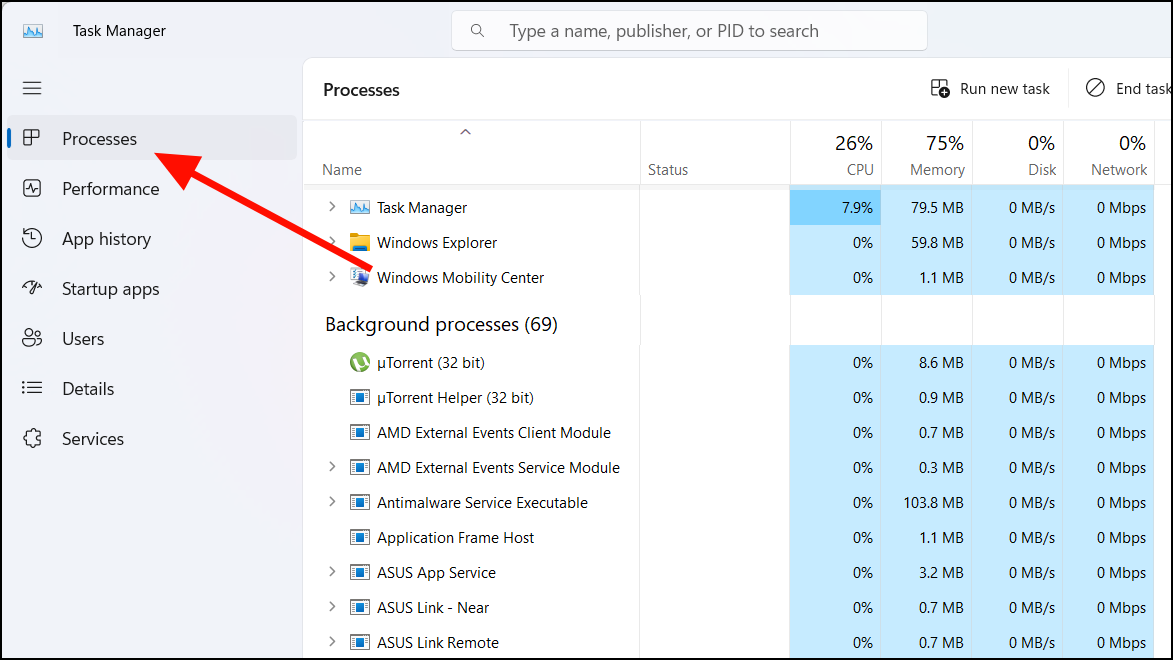
- Then, right-click the 'Microsoft Outlook' process and select 'End task'.
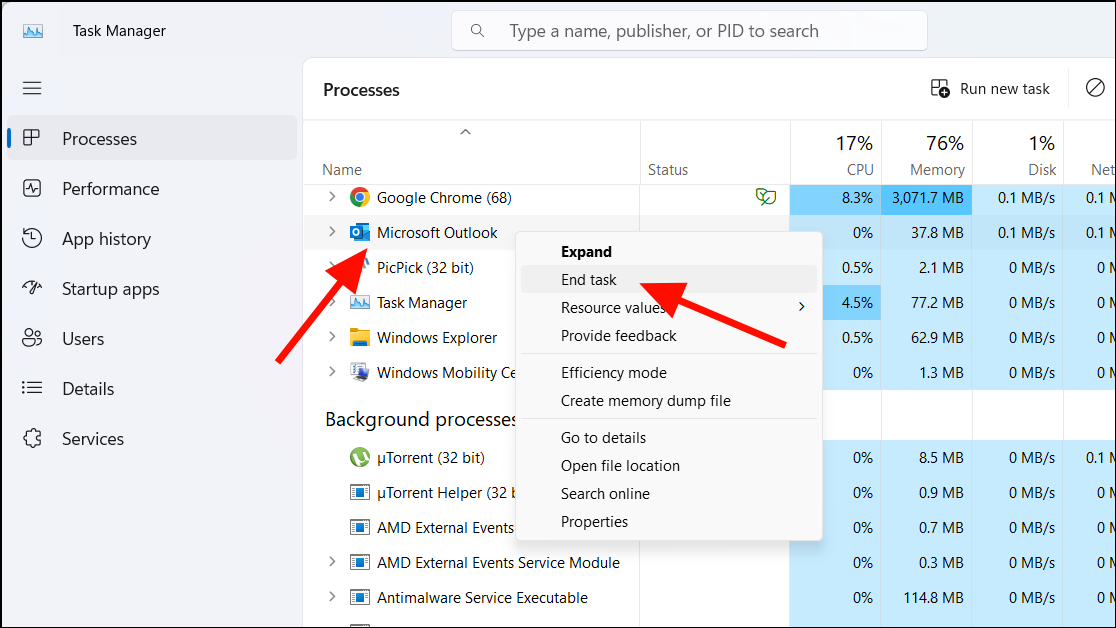
- After that, find and terminate the 'Microsoft Teams' process as well.
- Next, re-open the Outlook and Terms app again and see if the Teans add-in is available in the Outlook app.
2. Install and Run Teams as Administrator
The Teams Meeting add-in for Outlook requires the Microsoft Teams desktop app to be installed and running in the background. If the app is not installed on your computer the Teams add-in won't be visible in the Outlook app.
- First, log into an administrator account, then download and install the Teams with admin permissions.
- Once installed, you need to run the Teams app with administrator rights to get full access to the features. But don't open Outlook as an administrator, doing so will interfere with COM add-ins.
- Then, open the Teams app and sign in with the same account as Outlook.
- After that, restart the Teams app and reboot the Outlook app.
3. Sign Out and Sign In to Microsoft Teams
If you're having trouble with the Teams Meeting add-in in Outlook, Microsoft suggests reconnecting your account to the Teams app.
- First, completely close the Outlook app.
- In the Teams app, click your profile icon and select ‘Sign out’.
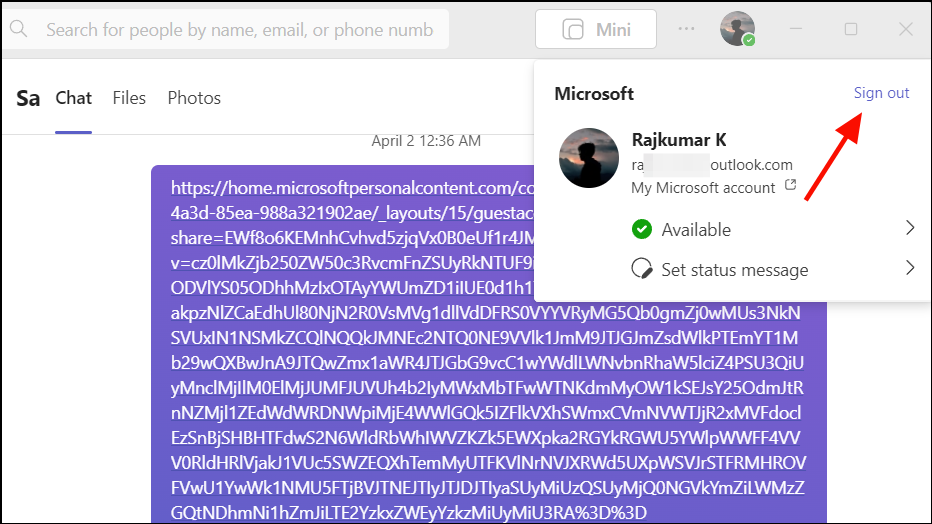
- Then, click ‘Sign out’ to confirm your sign-out in the pop-up.
- After that, open the Microsoft Teams app again and sign back in with your Microsoft account.
- Then, launch the Outlook app and check if the Team Meeting add-in is available in the Calendar tab.
4. Make Sure the Add-in is Enabled
When you install Microsoft Teams, the Team Meeting plug-in is automatically installed in the Outlook app. If you don’t see the add-in in the Ribbon, it could be due to Outlook disabling the add-in if it detects performance issues within the app. To fix this, simply check if the Teams add-in is disabled and enable it if necessary.
- Launch the Outlook on your computer.
- Once the app opens, click 'File' on the menu bar, and select 'Options' from the left-side pane.

- In the Outlook Options window, go to the 'Add-ins' section and set the 'Manage' drop-down menu to 'COM Add-ins'. Then, click the 'Go…' button.

3. This opens up the COM Add-ins dialog box. Check the box next to 'Microsoft Teams Meeting Add-in for Microsoft Office' and click 'OK'.
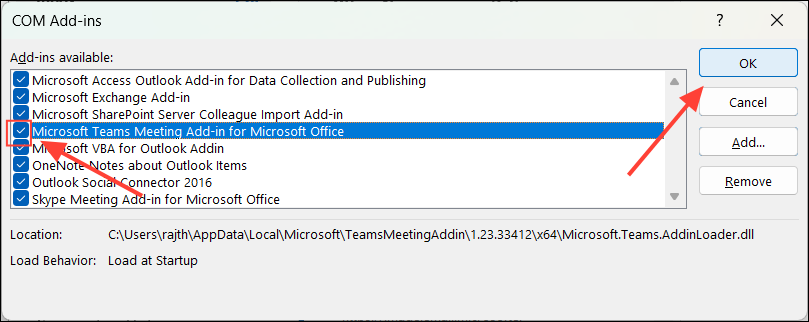
- After that, close and relaunch the Outlook app.
This will re-enable the Teams Meeting add-in and fix the missing add-in issue. However, if Outlook disables it again, follow the next method.
5. Ensure the Teams Meeting Add-in is Not in the Disabled Lists
Even if you re-enable the Teams Meeting add-in, Outlook may deactivate it again. If that happens, follow these steps:
- Open the Outlook options window again by clicking 'File' and selecting 'Options'.
- In the Outlook Options window, move to the 'Add-ins' section. Select 'Disabled Items' from the 'Manage' drop-down menu and click 'Go'.
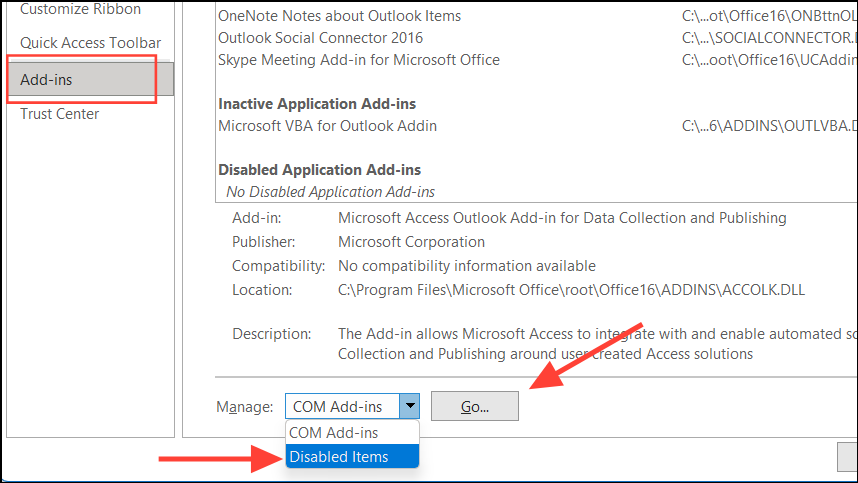
- When the Disabled Items dialog box opens, ensure that the 'Microsoft Teams Meeting Add-in for Microsoft Office' is not listed in there. If you see that add-in, select it and click the 'Enable' button.
- After that, close the Outlook options and restart the Outlook app.
6. Enable the Outlook Add-in from the Microsft Teams Admin Center
Microsoft Teams admin center has a group of meeting policies that control various aspects of meetings in your organization, specifically those organized using Microsoft Teams. These policies can be applied to all users or specific groups of users, allowing you to customize and manage meeting experiences within your organization (if you are an administrator).
If the Outlook Add-in is disabled in the meeting policies, you won’t be able to schedule and access Teams meetings when they create a new meeting in Outlook. Here’s how you can enable the Outlook Add-in from the Teams Admin Center:
To do this, you will need the Teams administrator account credentials or request the IT admin of your organization to make the changes for you.
- Go to the Microsoft Teams Admin Center website in your browser and sign in with the administrative account credentials.
- Once you’re there, click on ‘Meetings’ in the left panel and select ‘Meeting policies’ under it.
- On the right-side pane, turn On the toggle for ‘Allow the Outlook add-in’ under the ‘General’ section.
- Then, close the browser, restart your Microsoft Outlook app, and see if the Teams Meetings Add-in appears.
7. Update Outlook and Teams Apps
Your Outlook and/or Teams apps could be outdated which might explain why this feature is missing on your Outlook app. Updating the apps may add the Teams Add-in to your Outlook app and fix other issues.
- Open the Outlook app and click the 'File' menu.
- In the left-sidebar of the File menu, select 'Office Account'.

- On the right-side pane, click the 'Update Options' drop-down menu and select 'Update Now'.
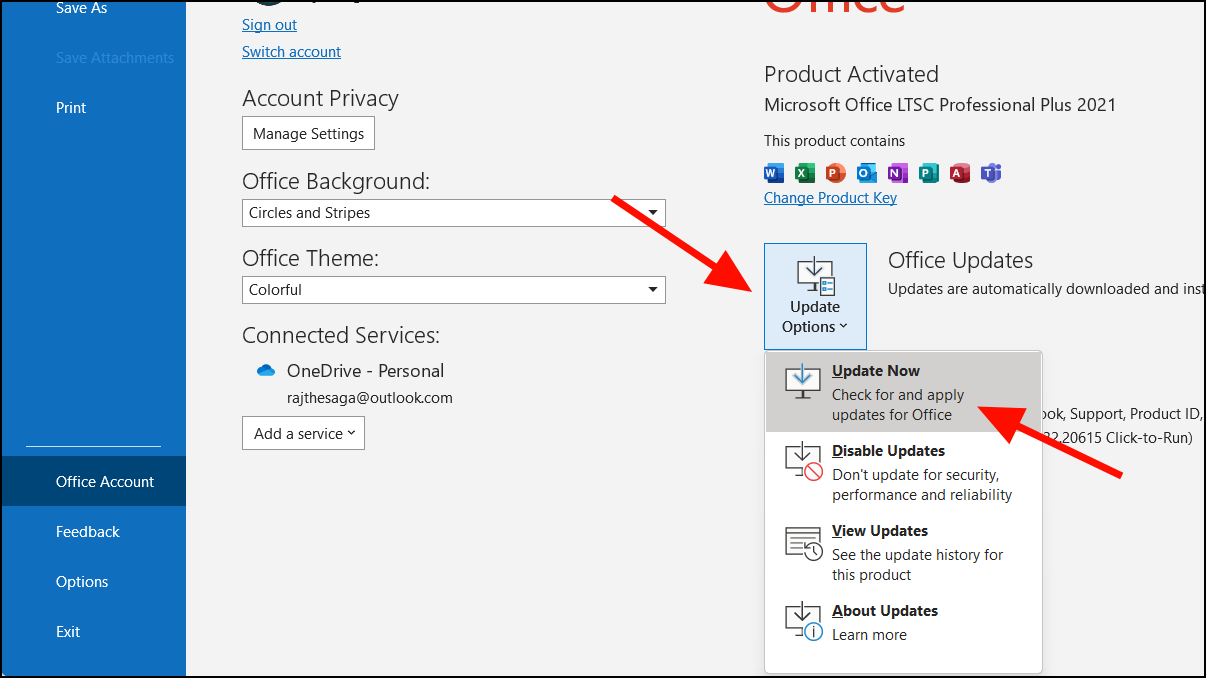
- Hang on while the Microsoft Office Click-to-Run program looks for any updates for Outlook. If there are updates, click 'Yes' to download and install them.
You might see a prompt to save your work and close Outlook so the updates can be applied. Click 'Continue'.
- After updating the Outlook app, open up the Teams app, click the three dots, and select 'Check for updates'.
- Wait for Teams to download and install any available updates.
After both apps are updated, restart the computer and check if the 'Teams Meeting' add-in appears in the Calendar tab.
8. Re-register Microsoft Teams DLL Files
For COM add-ins, such as the Microsoft Teams add-in, to work properly, the associated DLL file (Dynamic Link Library) needs to be registered in the Windows registry.
If the DLL files for the Teams add-in are corrupted or inaccessible, the add-in won't appear in the Outlook app. In such cases, you must re-register those dll files using the regsvr32 command. According to several users, re-registering a particular DLL named 'Microsoft.Teams.AddinLoader.dll' fixed the problem.
First, we need to find the path to the Microsoft.Teams.AddinLoader.dll file in your system.
- Open File Explorer, click the 'View' menu on the menu bar, move to 'Show', and click on 'Hidden items' to view hidden folders and files. If the 'Hidden items' option already has a tickmark next to it, skip this step.

- Next, go to the 'C' drive and open the 'Users' folder.

- Then, open the user folder you're currently logged into.
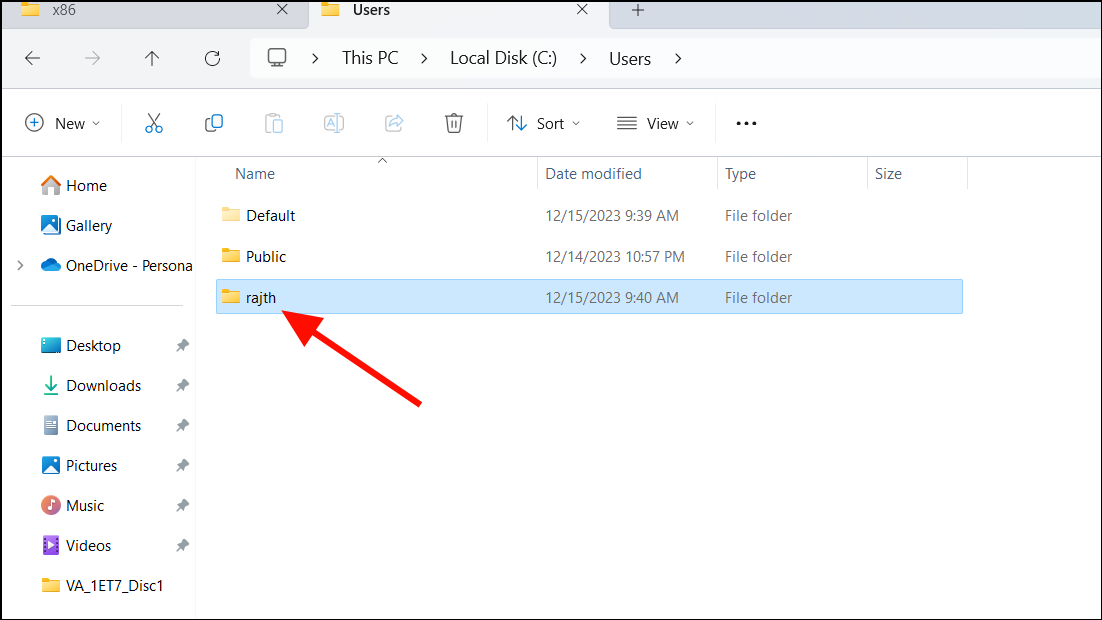
- Once there, navigate to the
AppData\Local\Microsoft\TeamsMeetingAddindirectory. You'll find a folder named with a version number like '1.23.33412'. Open this folder.
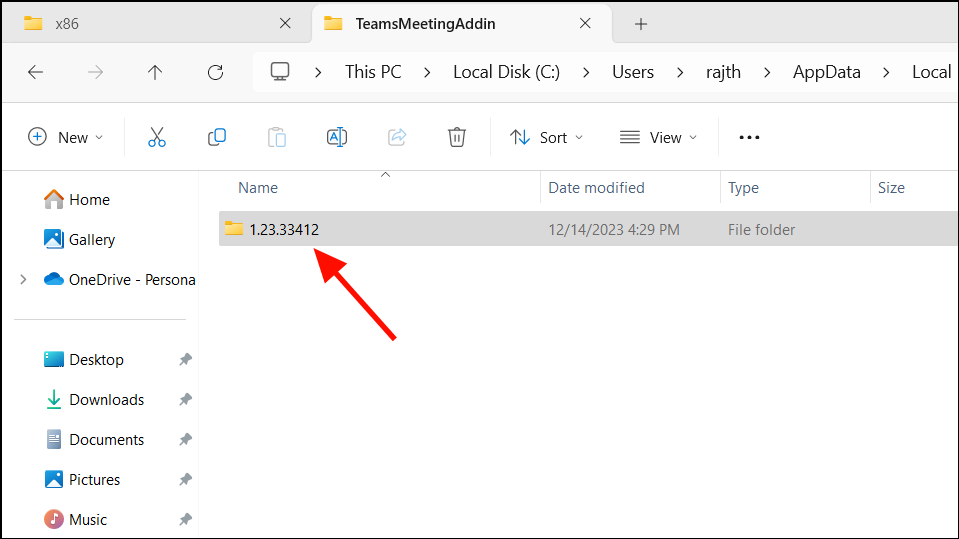
- Now, open the folder that matches your Windows version. If you have 32-bit Windows, open the 'x86' folder. If you have 64-bit Windows, open the 'x64' folder.
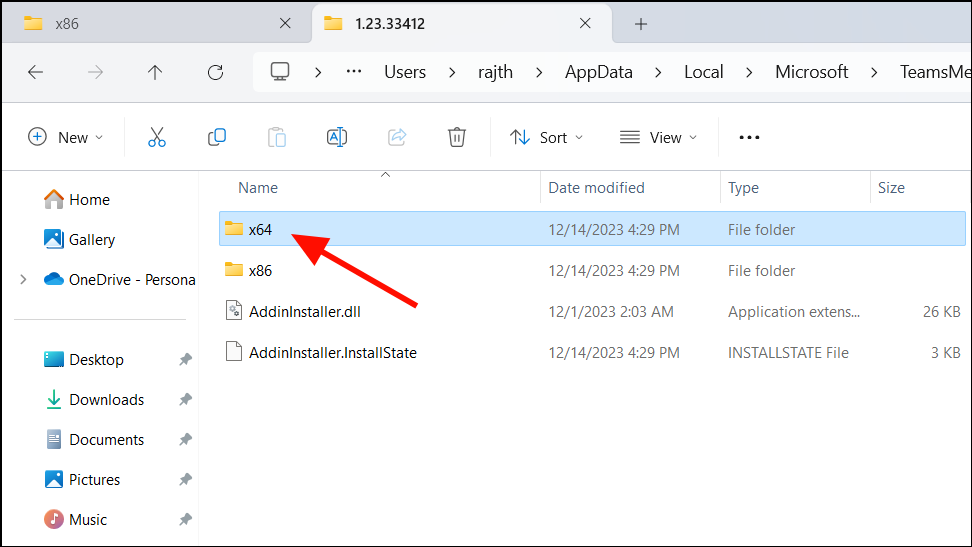
- Inside the folder, check if you see the file 'Microsoft.Teams.AddinLoader.dll'. If it's there, click on the address bar and copy its full path.
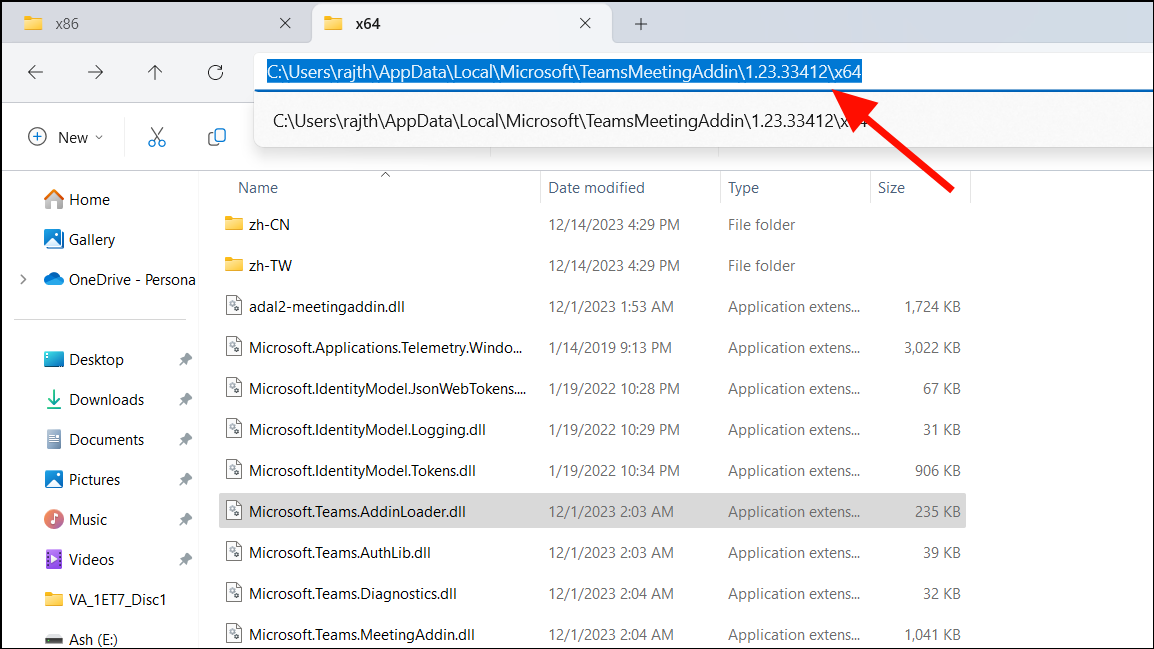
- Then, type 'cmd' in the Windows Search and select 'Run as administrator' to launch the elevated command prompt.
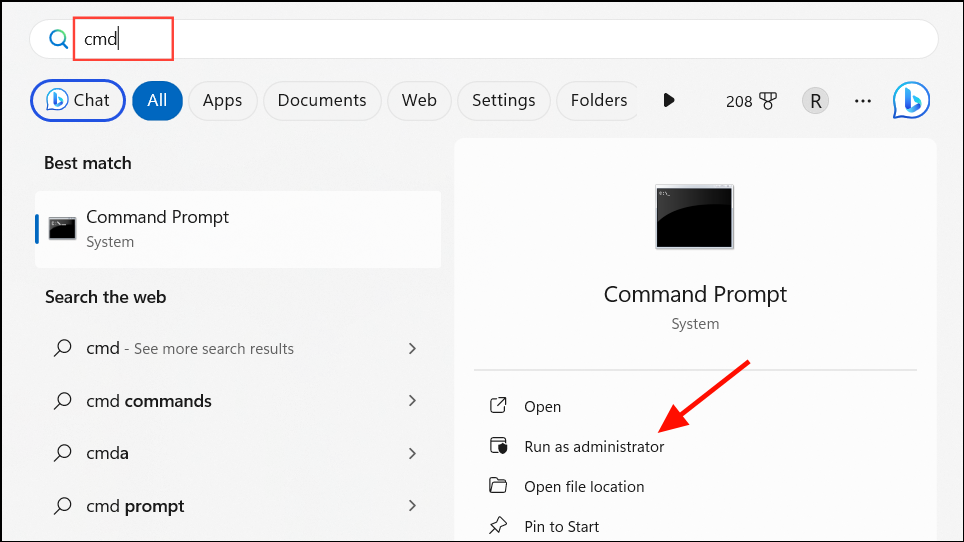
- In the Command Prompt, type
cd, press theSpacebar, paste the copied file path, and hitEnterto change the current directory. In our case, the command is:cd C:\Users\rajth\AppData\Local\Microsoft\TeamsMeetingAddin\1.23.33412\x64.
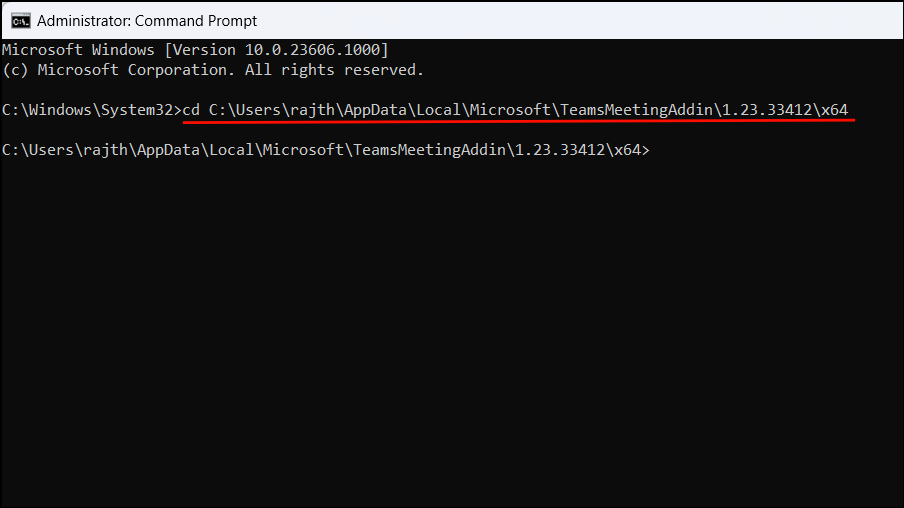
- Next, copy-paste the below command and press
Enterto re-register the DLL file:
regsvr32 Microsoft.Teams.AddinLoader.dll- After you see the 'DllRegisterServer in Microsoft.Teams.AddinLoader.dll succeeded.' message, click 'OK' in the RegSvr32 dialog box.
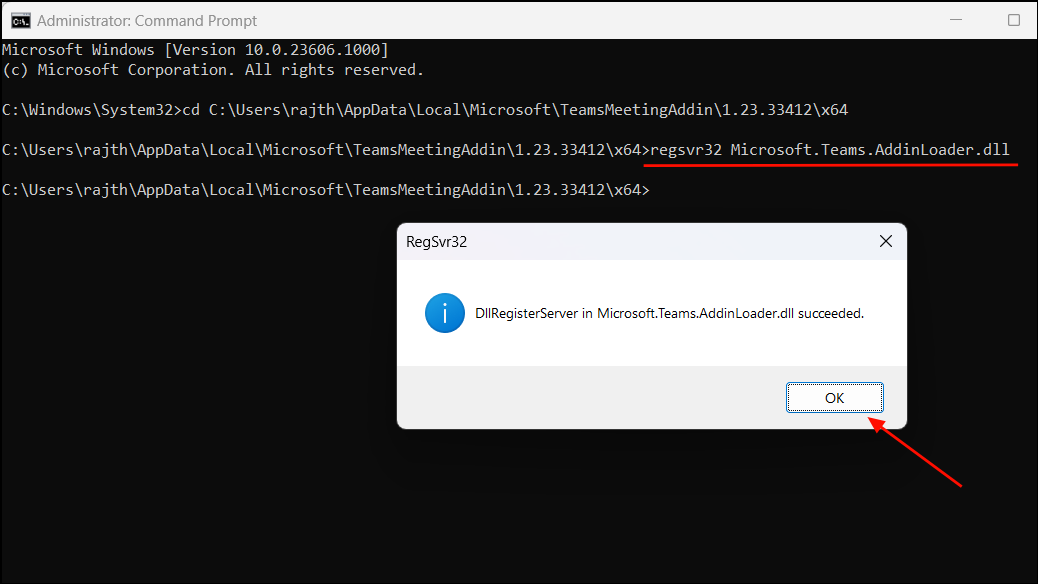
- Restart your PC and check if the Teams Meeting option is now visible in the Outlook app.
9. Reset the Microsoft Teams App
Your Microsoft Teams app might be having trouble integrating with the Outlook app due to misconfiguration or corrupt app data. Resetting the app may resolve these issues:
- Open Windows Settings, go to the 'Apps' section, and select 'Installed apps'.
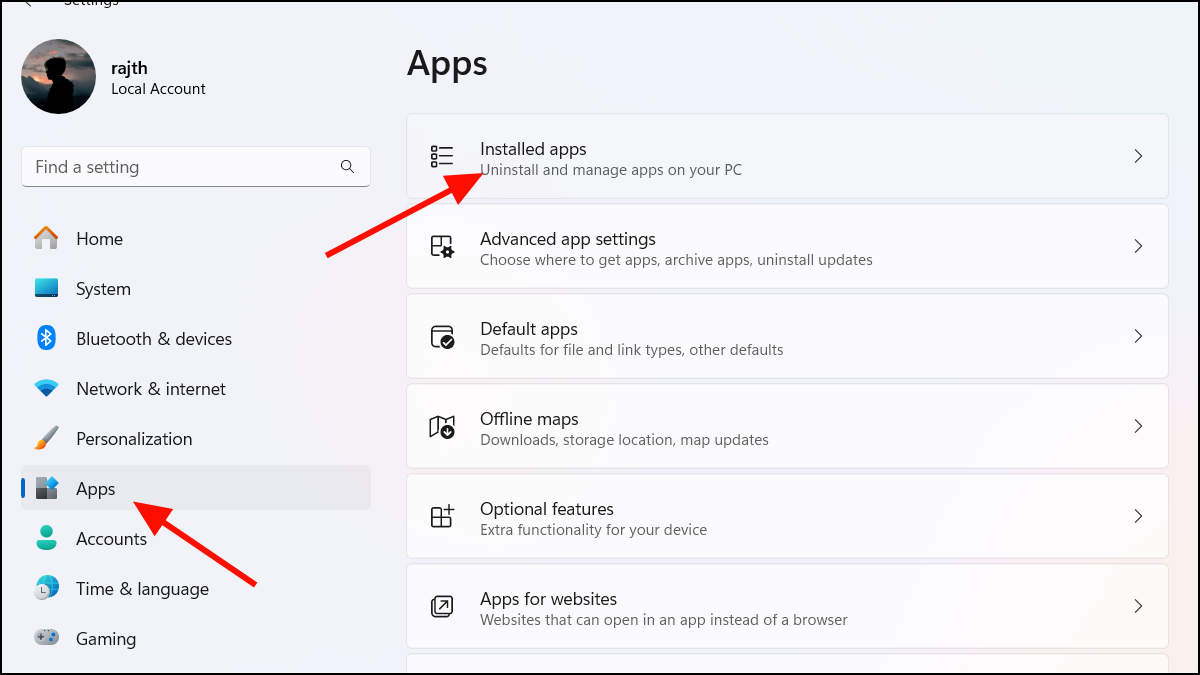
- Find the Microsoft Teams app from the list of apps, click the three dots button next to it, and select 'Advanced options'.

- Scroll down and click 'Reset'.
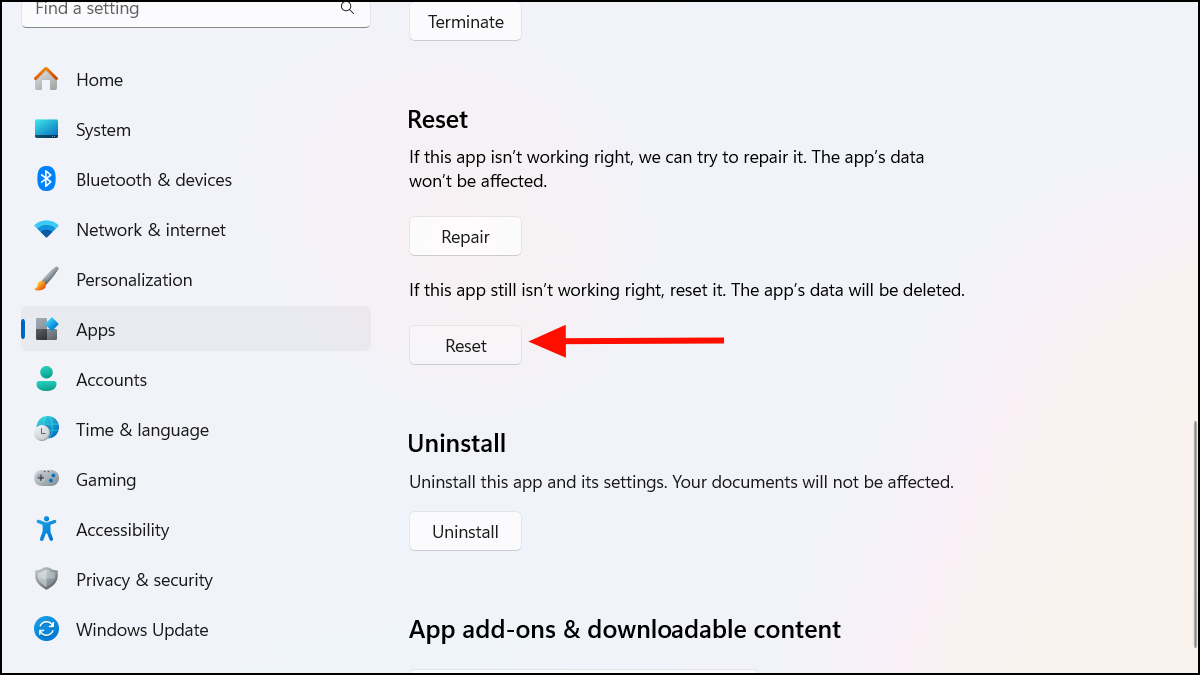
- Then, click 'Reset' again to confirm.
10. Change the Windows Registry
As mentioned earlier, the Outlook app may automatically disable the Teams add-in when it encounters performance issues. If the Teams Meetings add-in often disappears, this could be the reason. To fix this permanently, edit the Windows Registry to prevent Outlook from disabling the add-in again.
- First, completely close the Outlook app.
- Then, press
Windows+R, type ‘regedit’, and hitEnter.
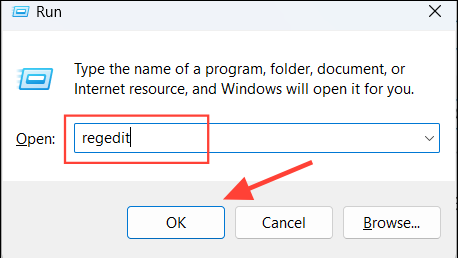
- It’s always recommended to backup your registries before you make any changes to the Windows Registry. Changing the wrong registry can create more problems.
- To do that, click the ‘File’ menu and select ‘Export’.
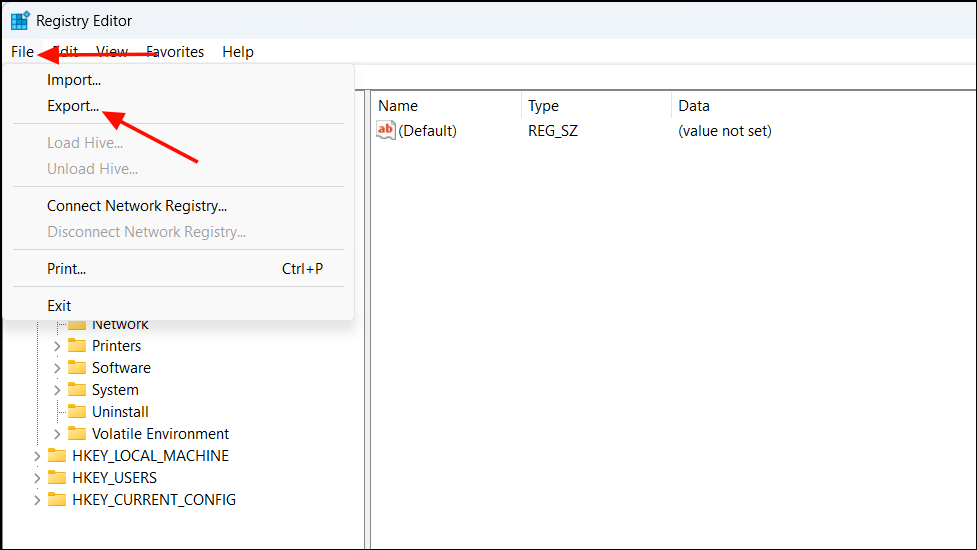
- Then, give a name to your backup and click ‘Save’.

- After backing up the registries, navigate to the below location manually or copy-paste the following path into the registry address bar:
Computer\HKEY_CURRENT_USER\Software\Microsoft\Office\Outlook\Addins\TeamsAddin.FastConnect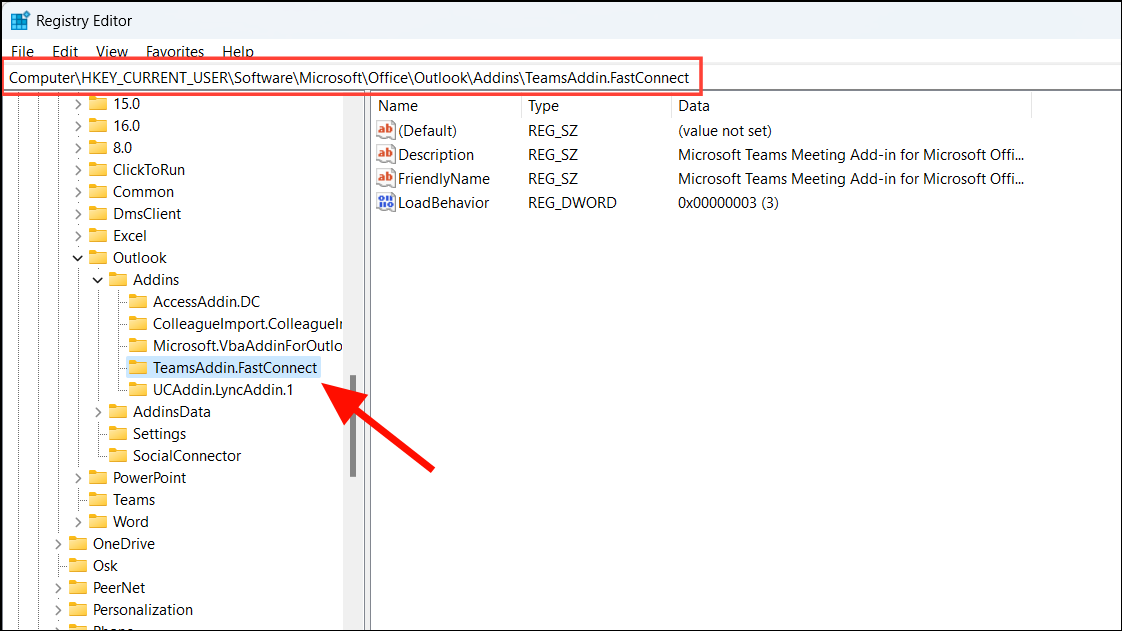
- Then, double-click the 'LoadBehavior' DWORD. If the entry doesn't exist, right-click on an empty area and select 'New' > 'DWORD (32-bit)' Value. Then, name it 'LoadBehavior'.
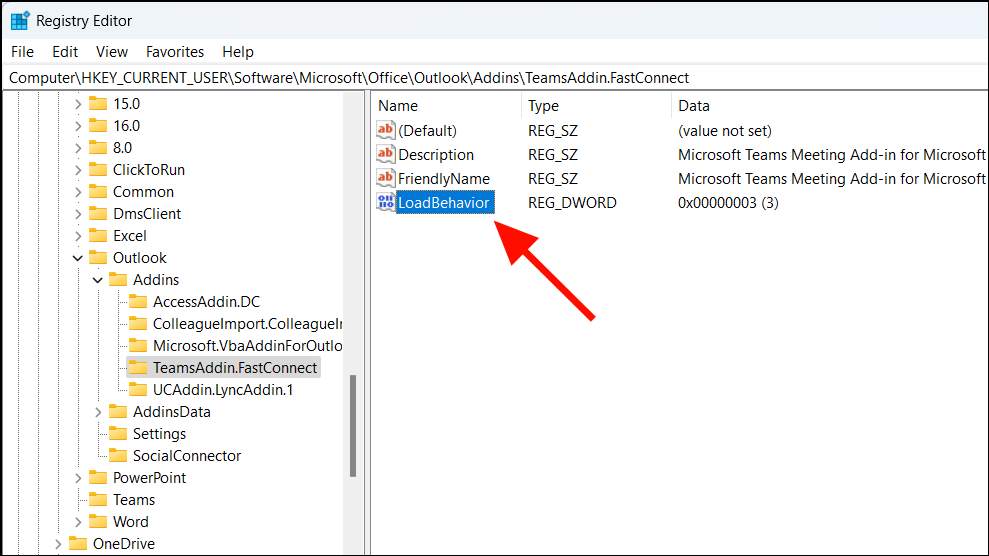
- After that, set the Value data to
3and click 'OK'.

- Restart the computer and check the Outlook app again.
11. Repair the Microsoft Office App
Repairing the Office app can sometimes fix the missing Teams add-in problem in the Outlook app. Repairing the Office app can help to fix this problem by resetting the Office applications to their default settings.
- Open the Control Panel, change the ‘View’ to 'Large icons', and select the 'Program and Features' option.

- Find and right-click the Microsoft Office app from the list of installed programs. Then, select 'Change'.
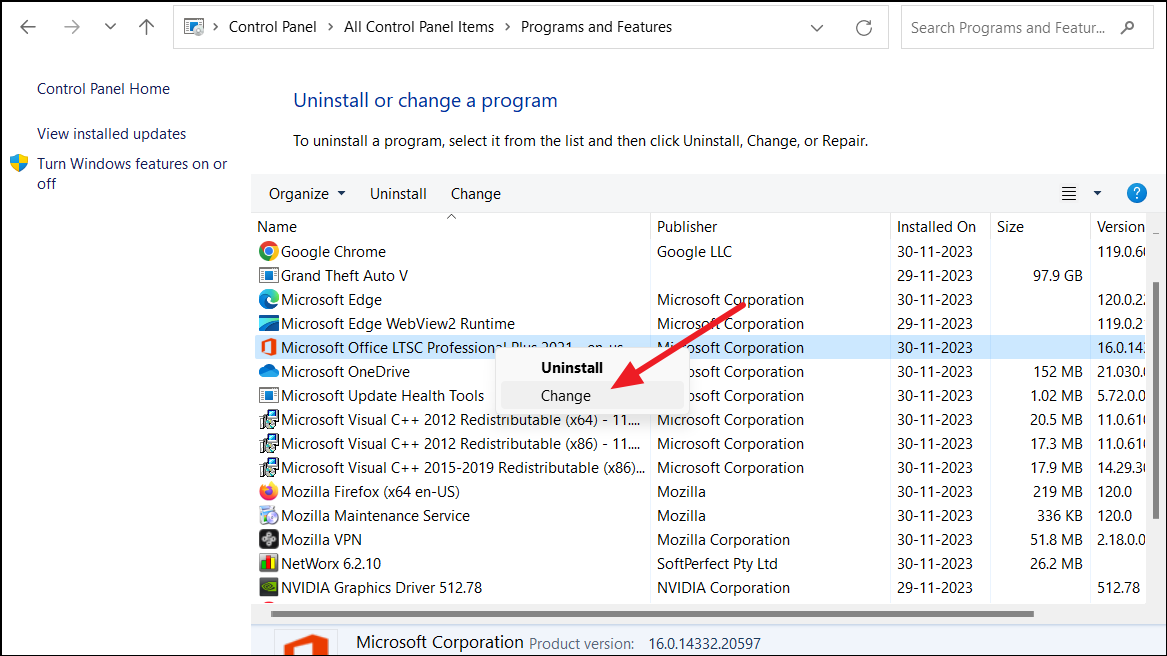
- On the pop-up window, choose 'Online Repair', and click 'Repair'.
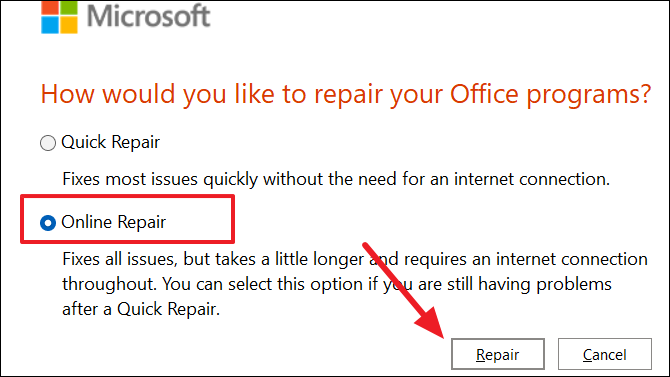
12. Run The Microsoft Support and Recovery Assitant
Microsoft Support and Recovery Assistant (SaRA) is a free tool designed to diagnose and fix common issues with Microsoft Office applications, including Outlook and Teams. SaRA will run tests to determine why Teams meetings aren't appearing in Outlook. Then, the tool will show you specific steps you can follow to fix the problem. Here’s how to use the tool:
- Launch your favorite browser and go to the Microsoft website download page for the Support and Recovery Assistant tool.
- Scroll down to the ‘Installing Microsoft Support and Recovery Assistant’ and click the ‘Download’ button.
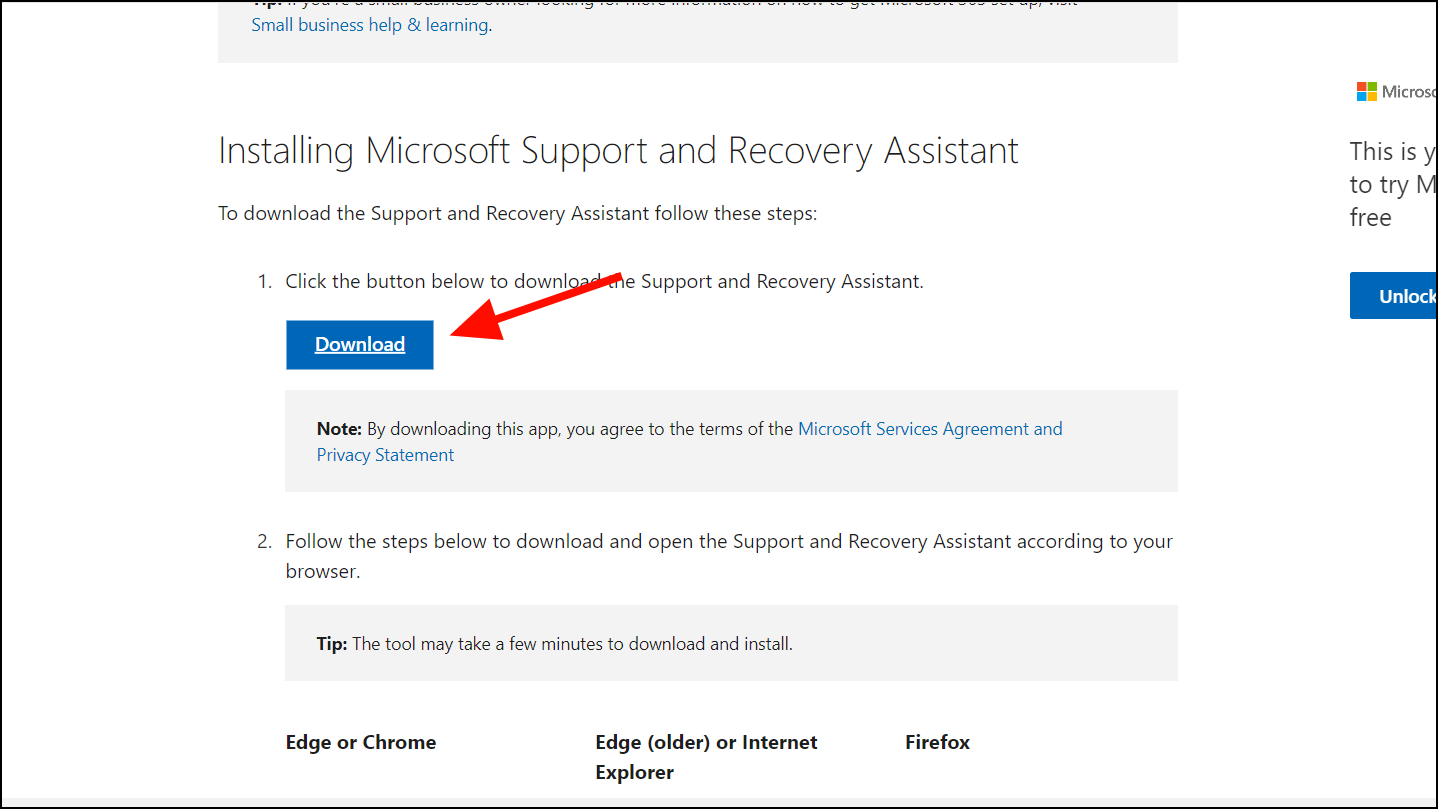
- Next, double-click the downloaded file to run the setup. Then, click ‘Install’ in the setup.
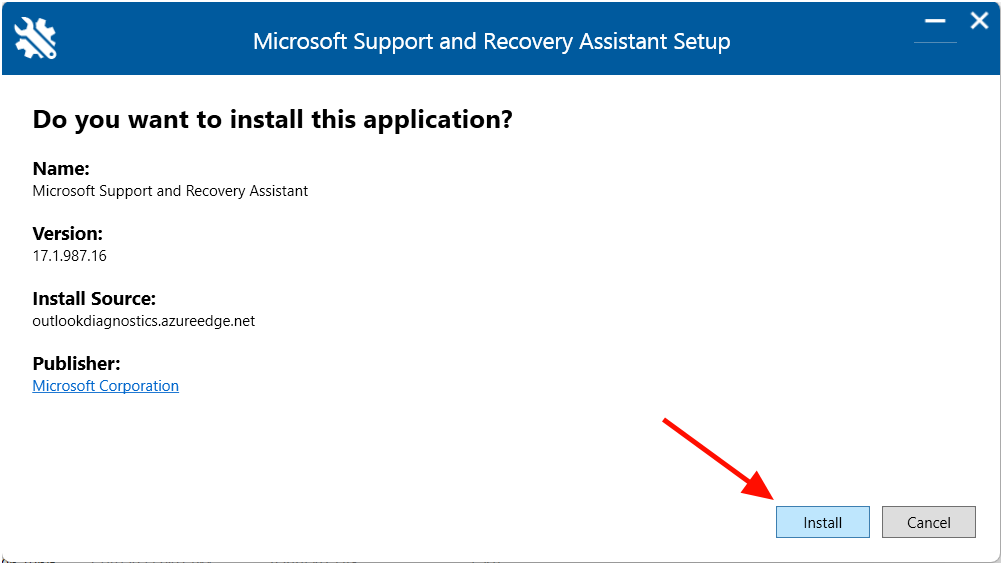
- Click ‘I agree’ to accept the terms of the application.
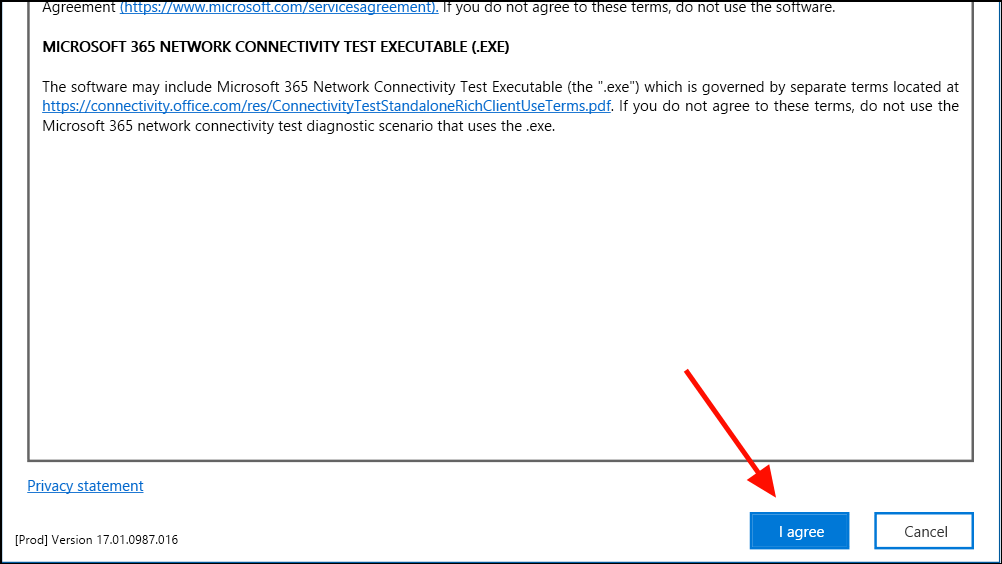
- From the list of products, select ‘Outlook’ and click ‘Next’ to continue.
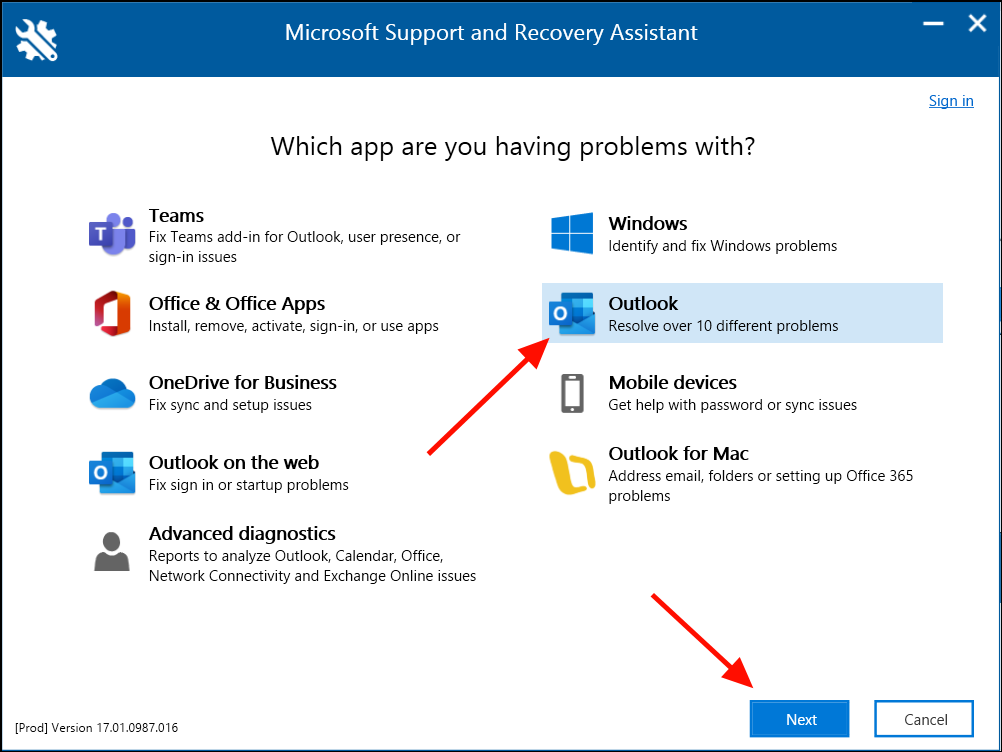
- On the next screen, select ‘The Teams meeting option isn’t shown or the Teams Meeting add-in doesn’t load in Outlook’ and click ‘Next’.
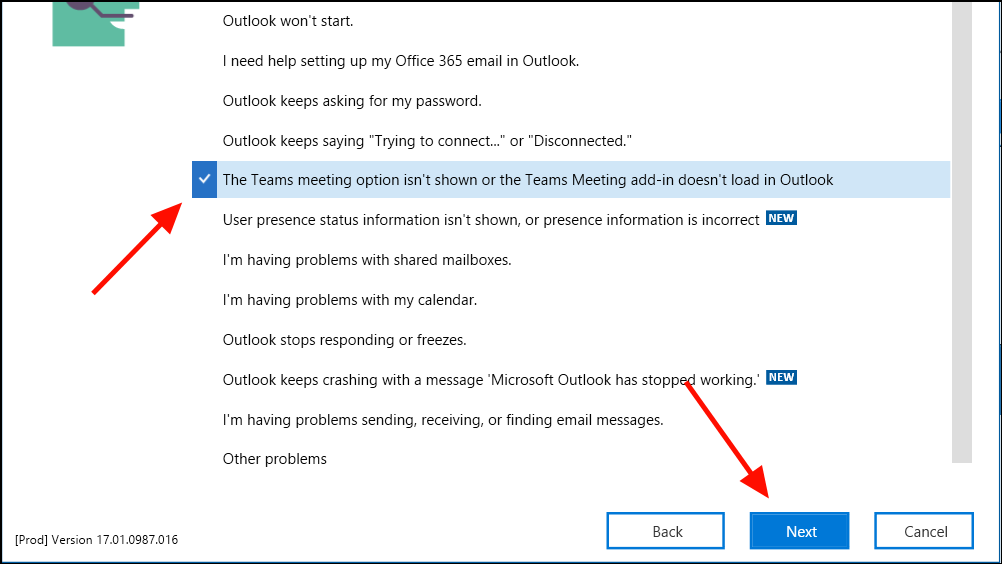
- Next, you’ll be asked whether this is the affected computer, select ‘Yes’ and click 'Next'.

- Let the Microsoft Support and Recovery Assistant check for problems. In the meantime, you can save any open emails in Outlook and close the app. When the tool suggests a fix, click ‘Perform’.
- Once it’s done, you'll see a message letting you know the Teams Meeting add-in has been registered successfully.
- If you see this message and the add-in still isn't there, just return to the Assistant and select ‘No’.
13. Reinstall Teams and MS Office
If none of the troubleshooting methods worked, there's a possibility that the Microsoft Teams application, the Outlook application, or both might be corrupted or have damaged files. Reinstalling these apps may resolve the issue.
- Open Windows Settings, go to 'Apps' and then 'Installed apps'.
- Find the 'Microsoft Teams' app, click the three dots, and select 'Uninstall'.
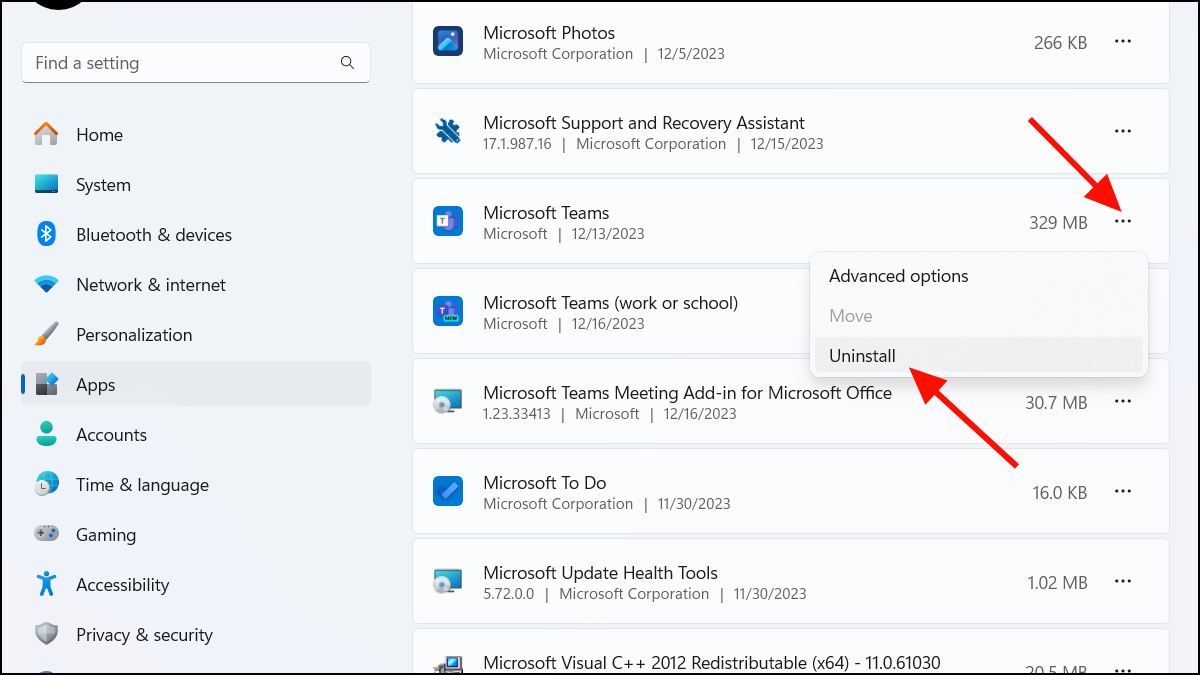
- After uninstalling the app, reboot your computer and install the Teams app.
If reinstalling the Teams app doesn't resolve the missing add-in issue, uninstall and reinstall the entire Microsoft Office suite. If you're using the new Outlook app for Windows, uninstall and reinstall the classic Outlook application through the MS Office suite.
- From the list of installed apps, look for the 'Microsoft Office' app.
- Click the three dots and select 'Uninstall'.
- Then, install the MS Office suite again.
Once you reinstall the apps, the Teams add-in will probably appear in the Outlook app.
We hope this article helped you solve the Teams Meeting add-in missing problem in Outlook! If you have any further questions, feel free to leave a comment below.











Member discussion